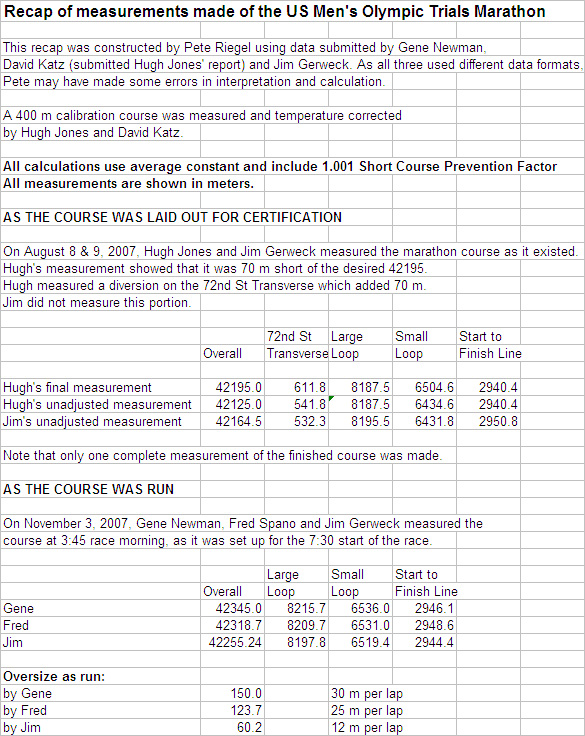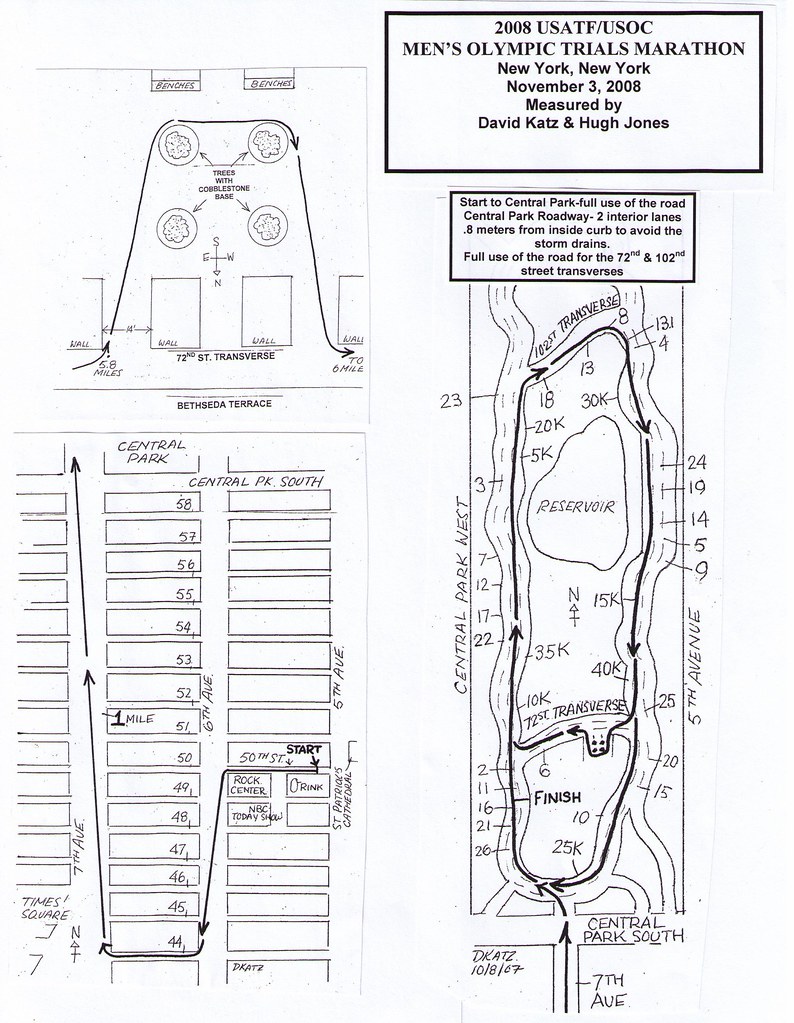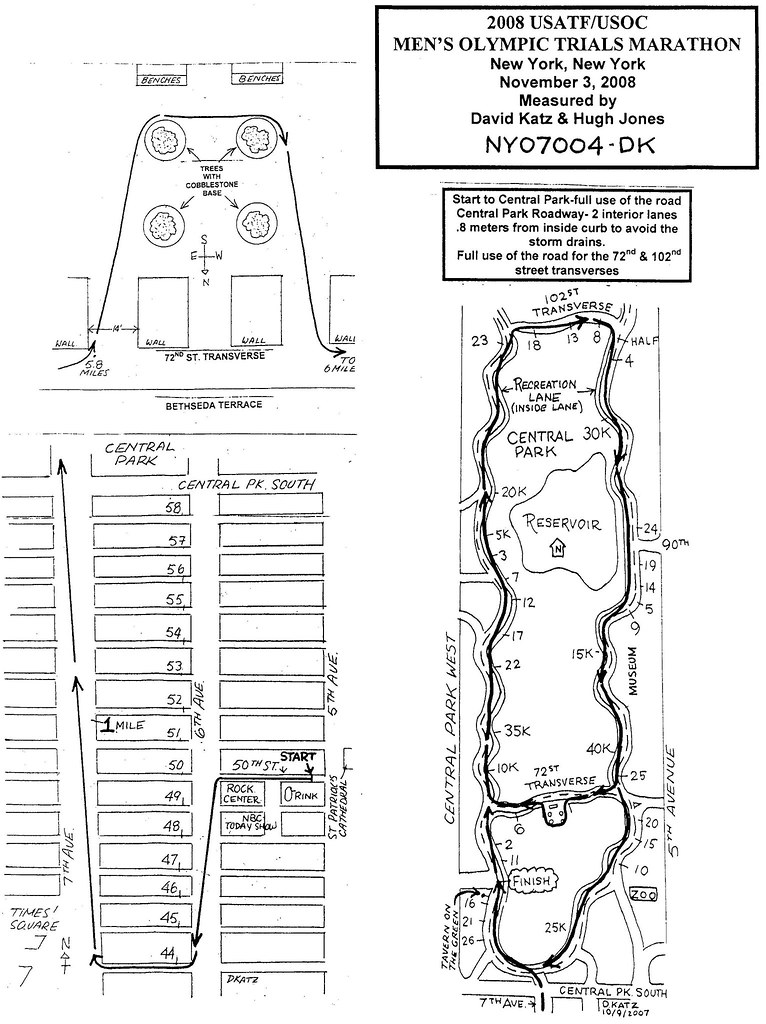US Men’s Olympic Trials Marathon Measurement DataThe measurement data shown below was obtained through examination of four reports, each having a different format. One was Hugh Jones' (forwarded by David Katz), one was Gene Newman's, two were Jim Gerweck's. Jim was present on the first day of Hugh's measurement, which determined the length of the course as laid out. He went home that day and was not present when the adjustment was made and the miles laid out. Jim also measured the course on race day. I may have made some errors, but I believe the summary to be reasonably accurate.
What explains the difference between “as measured” and “as run”? I believe two factors affected the difference.
First, Gene and Fred were surprised at the last minute call for a measurement. They had never seen the course, even in daylight, and the measurement was conducted in the dark. This undoubtedly affected their ability to ride the SPR.
The course was well on its way to being set up for the race. The course was originally laid out with no obstructions on the course. On race day, watering tables and other cones and structure were in place, forcing deviations from the SPR by Gene and Fred. The exact amount of the extra distance added cannot be documented, but it was undeniably there. The additional distance amounted to about twelve meters extra for each of the five laps involved.





